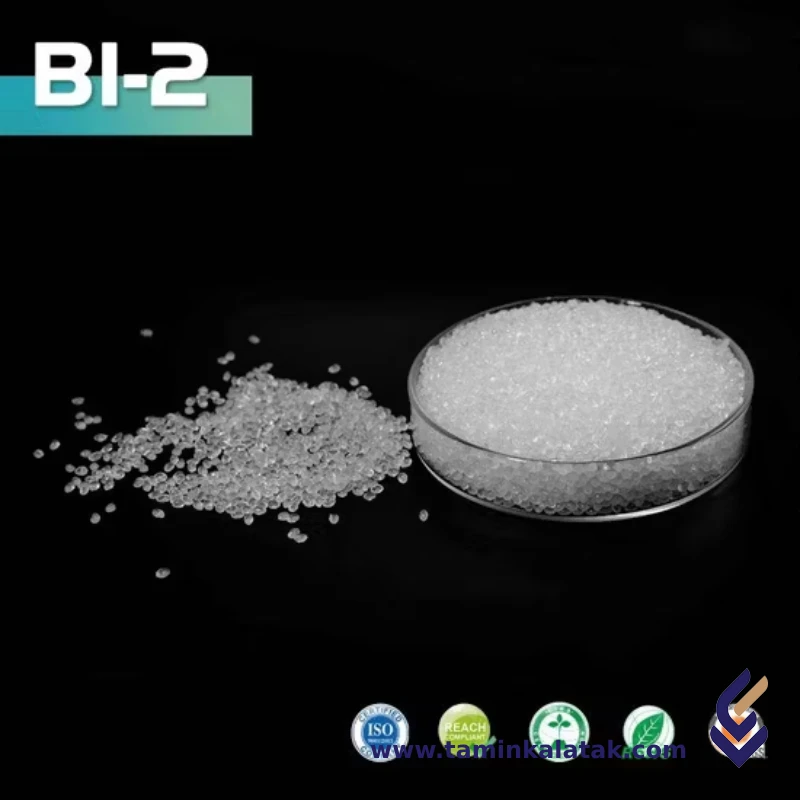Polymers are made up of very large molecules made up of many repeating units called monomers, which ultimately form this long polymer chain
A compound is a polymer blend mixed with additives, fillers, and reinforcements to achieve specific properties for end-use applications. A masterbatch is a concentrated mixture of additives or pigments in a carrier resin, used to enhance plastics without altering their base properties.
Maleic Anhydride Grafted POE
Maleic anhydride grafted polyolefin elastomer (MAH-g-POE) is a functionalized elastomer where maleic anhydride is grafted onto a polyolefin elastomer (POE) backbone. This modification enhances compatibility with polar materials and improves adhesion in polymer blends and composites.
Structure Maleic Anhydride Grafted POE
Maleic anhydride grafted polyolefin elastomer (MAH-g-POE) is a modified polymer where maleic anhydride (MAH) functional groups are chemically grafted onto a polyolefin elastomer (POE) backbone through reactive extrusion or other grafting methods. The polyolefin elastomer provides flexibility, impact resistance, and good compatibility with polyolefin-based materials, while the maleic anhydride groups introduce polar functionalities that improve adhesion, compatibility, and interfacial interactions with polar materials such as polyamides, polyesters, and fillers. The grafting process typically involves the use of an initiator, such as a peroxide, to generate free radicals that facilitate the attachment of MAH onto the POE chains. This modification enhances the polymer’s ability to act as a compatibilizer, impact modifier, or coupling agent in various applications, including toughening engineering plastics, enhancing adhesion in composite materials, and improving dispersion of fillers in polymer matrices. The degree of grafting and molecular weight of the base POE influence the final properties of the material, allowing it to be tailored for specific applications in industries such as automotive, packaging, and adhesives.
Properties Maleic Anhydride Grafted POE
Maleic anhydride grafted polyolefin elastomer (POE-g-MAH) is a modified polymer known for its excellent adhesion, compatibility, and impact resistance. It retains the flexibility and toughness of polyolefin elastomers while incorporating reactive maleic anhydride groups that enhance its bonding ability with polar materials such as polyamides, polyesters, and fillers. This modification improves interfacial adhesion in composite materials, making it highly effective as a compatibilizer in polymer blends and fiber-reinforced composites. POE-g-MAH exhibits good thermal stability, chemical resistance, and weatherability, making it suitable for applications in automotive, packaging, and electrical industries. Additionally, it maintains excellent impact strength at low temperatures and provides improved processing performance due to its enhanced compatibility with other polymers.
Applications of Maleic Anhydride Grafted POE (POE-g-MAH)
- Compatibilizer in polymer blends – Improves adhesion between polyolefins and polar polymers like polyamide (PA) and polypropylene (PP).
- Automotive industry – Used in bumpers, dashboards, and structural components for enhanced toughness and durability.
- Adhesives and coatings – Enhances bonding with polar substrates, improving adhesion strength.
- Thermoplastic elastomers – Used to modify elastomers for better mechanical properties.
- Wire and cable insulation – Provides improved flexibility, toughness, and weather resistance.
- Packaging materials – Enhances impact resistance and processability in multilayer films.
- Fiber-reinforced composites – Improves interfacial adhesion and toughness in composite materials.
Advantages of POE-g-MAH
- Excellent impact resistance – Maintains toughness even at low temperatures.
- Enhanced compatibility – Improves bonding between non-polar and polar polymers.
- Good thermal stability – Suitable for high-temperature applications.
- Chemical and weather resistance – Performs well in outdoor and harsh environments.
- Improves polymer blends – Enhances toughness without significantly reducing rigidity.
Disadvantages of POE-g-MAH
- Higher cost – More expensive compared to unmodified POE.
- Limited adhesion to highly polar polymers – May require further modification for specific applications.
- Lower stiffness and strength – May not match the mechanical properties of engineering plastics.
Applications
| Applications | , , , |
|---|
POE
| Products | MFI (g/10 min) | Density (g/Cm³) | Process Method | Applications | Data Sheet | MSDS |
|---|---|---|---|---|---|---|
| grafted POE | 1-10 | 0.86-0.90 | Reactive Extrusion Solution Grafting Solid-State Grafting Melt Blending | Compatibilizer in Polymer Blends Impact Modifier Adhesive and Coupling Agent Automotive Components Wire and Cable Coatings |







